A Coffee To Go – az önkéntesség új formája programsorozat keretében meghívott vendégeink decemberben a gyermekszegénység témájáról osztották meg véleményüket. A teljes beszélgetés a cikk végén meghallgatható.
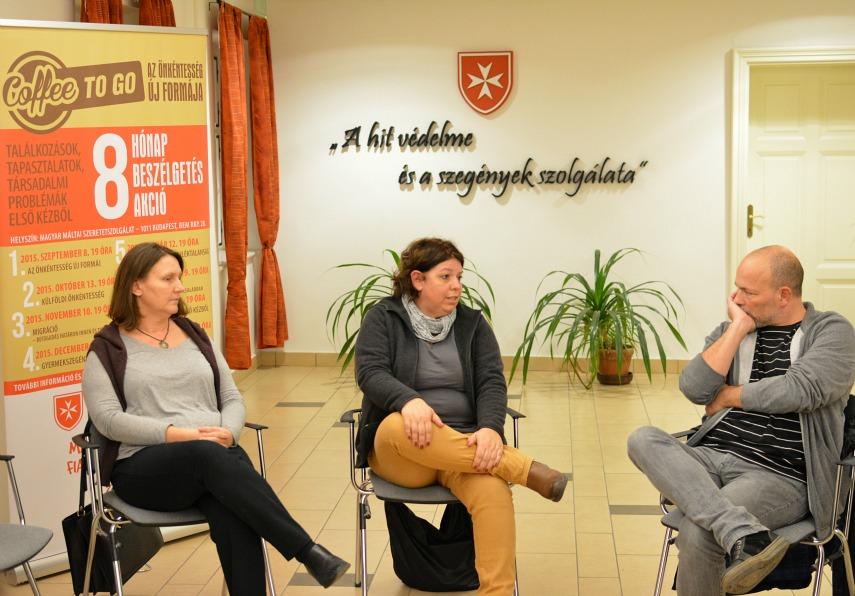
„Ha éhező gyerekekre gondolunk, sokaknak az afrikai gyerekek jutnak eszükbe, akik vékony karral és lábbal, az egyoldalú táplálkozás miatt pókhassal állnak a kamerák előtt. Magyarországon a gyermekéhezés nem így néz ki, hiszen fejlett szociálpolitika mellett történik” – mondta el Husz Ildikó, az MTA TK Gyerekesély tudományos főmunkatársa.
A médiában eltérő számokkal találkozunk: van ahol százezerre, máshol ötszázezerre becslik a nélkülöző gyerekek számát. De miért vannak ilyen hatalmas a különbségek a cikkekben olvasható adatok közt? Husz Ildikó és kutatótársai célul tűzték ki, hogy módszertanilag korrekten megbecsüljék, hány gyerek éhezik ma Magyarországon. 2014-ben Marozsán Csillával együtt jelentették meg Szociális nyári gyermekétkeztetés – egy rendelet tanulságai című tanulmányukat, amely később civil kezdeményezések és társadalmi programok számára is hivatkozási alap lett.
A tanulmányból kiderült, hogy a gyerekes családok 12%-ában fordul elő, hogy nincs pénz élelemre. 36 és 54 ezer gyerek közé tehető azok száma, akik rendszeresen nem kapnak eleget enni. Emellett több mint 200,000 kríziséhezőről beszélhetünk: ők azok, akik az év bizonyos szakaszában potenciális éhezőnek számítanak. A gyerekek 9%-a a nem kap friss zöldséget, gyümölcsöt, és minden tízedik gyerek nem eszik húst.
„Amikor a családok megkapják a segélyt, akkor két hétig nincs éhezés, de a fennmaradó egy-két hétben már nem marad pénz élelemre” – magyarázta a folyamatokat Husz Ildikó. „Az iskola 180 napja alatt a gyerekek kapnak ellátást, ezért sem beszélhetünk napi szintű éhezésről. De hétvégéken, segély utáni harmadik-negyedik héten, nyári, téli, tavaszi szünetben sokan szisztematikusan nem kapnak enni.”
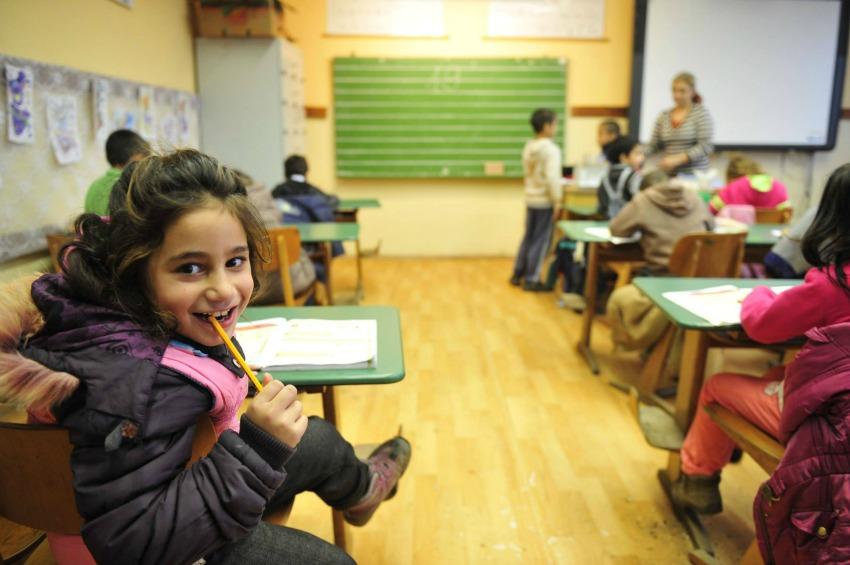
A kutató Vecsei Miklóst, a Magyar Máltai Szeretetszolgálat alelnökét idézte, aki szerint egy éhező gyerek is soknak számít egy olyan fejlettségi szintű országban, mint Magyarország, ahol komoly szociálpolitikai rendszer működik.
„Mi is ebből indultunk ki. A szó hétköznapi értelmében nem önkéntesség, sokkal inkább állampolgári öntudat vagy lelkiismeret-furdalás indította el a kezdeményezésünket” – folytatta Horgas Péter, díszlet- és jelmeztervező, műsorvezető, a magyarországi gyermekéhezés felszámolására létrejött Nemzeti Minimum ötletgazdája.
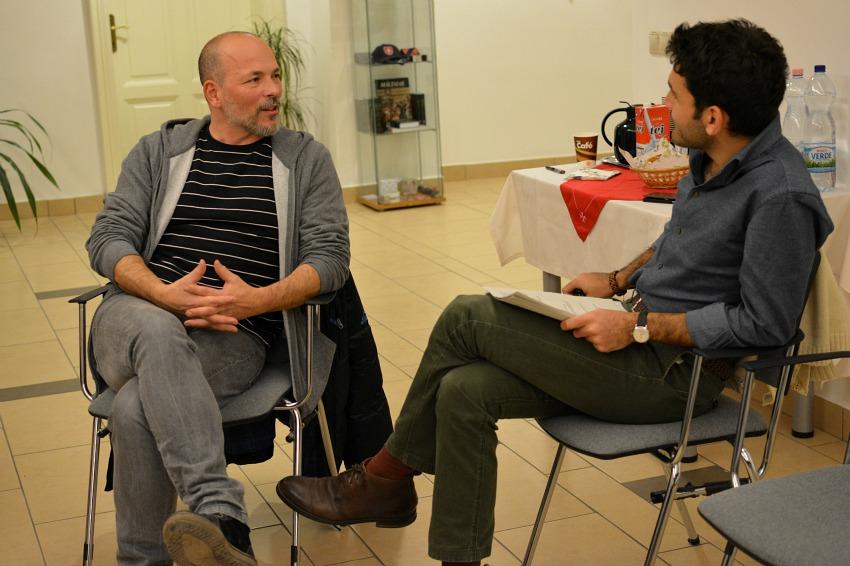
„Amikor civil kezdeményezésként elindultunk 2015 januárjában, azt kértük, hogy a költségvetésben mindig garantáltan legyen annyi összeg, ami szükséges ahhoz, hogy ne éhezzenek a gyerekek” – kezdte az elején Horgas Péter. „Szerettük volna megérteni, hogy mi van a háttérben: szakembereket hívtunk meg, sok mindenkivel beszéltünk.”
A kezdeti csapatot kiegészítő szakértői társasággal fogalmazták meg azt az országgyűlési határozati javaslatot, amelyben törvényi keretet kértek a magyarországi gyermekéhezés felszámolásának érdekében. A javaslatot első körben befogadták, de a Parlament Népjóléti Bizottsága november 2-án végül elutasította. A Nemzeti Minimum azonban Husz Ildikó szerint nagyban hozzájárult ahhoz, hogy a gyerekéhezés témáját ne kerülhesse meg a politika. Nagyrészt nekik köszönhető, hogy az iskolai szünetekre is kiterjesztették a gyerekétkeztetést. Szeptember 26-án nagyszabású Minimum-koncertet tartottak a Sportarénában, ahol közel háromszáz művész lépett fel, és tizenkét órán át szólt a zene.
„Nem akarunk belemenni pártpolitikai vagdalkozásba, mert elvonná a figyelmet a témáról” – mondta Horgas Péter. „Ezt az ügyet a dolog jellegéből adódóan egyetlen kormány sem tudja önmaga megoldani. Hiába lesznek törvények, hiába lesz háromszor ennyi pénz, ez a társadalom közös feladata.”
A tennivalókból pedig a Máltai Szeretetszolgálat is kiveszi a részét. A Gyerekesély program keretében konzorciumi partnerként vannak jelen nyolc hátrányos helyzetű kistérségben. Játékokkal megpakolt kisbuszokkal, vagyis mozgó játszóterekkel jutnak el a falvakba. „Megállunk réteken, patakpartokon, iskolaudvarokon, elővesszük a játékainkat, és elkezdünk a gyerekekkel foglalkozni. A gyerekek pedig sosincsenek egyedül, ott vannak a szülők, nagyobb testvérek, pedagógusok. A játék egyben kommunikációs eszköz a helyi emberekkel való kapcsolattartáshoz” – mesélte munkájukról Hajdú Krisztina, a Magyar Máltai Szeretetszolgálat Gyerekesély koordinátora.
A játékok közül a gyorsan felállítható ugrálóvár az egyik nagy kedvenc. Előfordult, hogy valakinek öt-hat kör után lezuhant a vércukor szintje, és szinte elájult. A többi anyuka ilyenkor csak legyintett. Elmondták, hogy a kicsik ilyenkor szokták megkapni az első pálinkát. Jön az este, a hideg, délután öt óra tájban elkezdik bebódítani a gyerekeket, hogy ne kérjenek enni, ne fázzanak, és ne sírjanak fel éjszaka. „Az ájulás közelébe kerülő gyerekeknek tehát elvonási tüneteik voltak. Ezek sosem derülnének ki, ha csak kérdőíveznénk, és nem lennénk jelen” – mondta el Hajdú Krisztina a helyszínen tapasztaltakról.
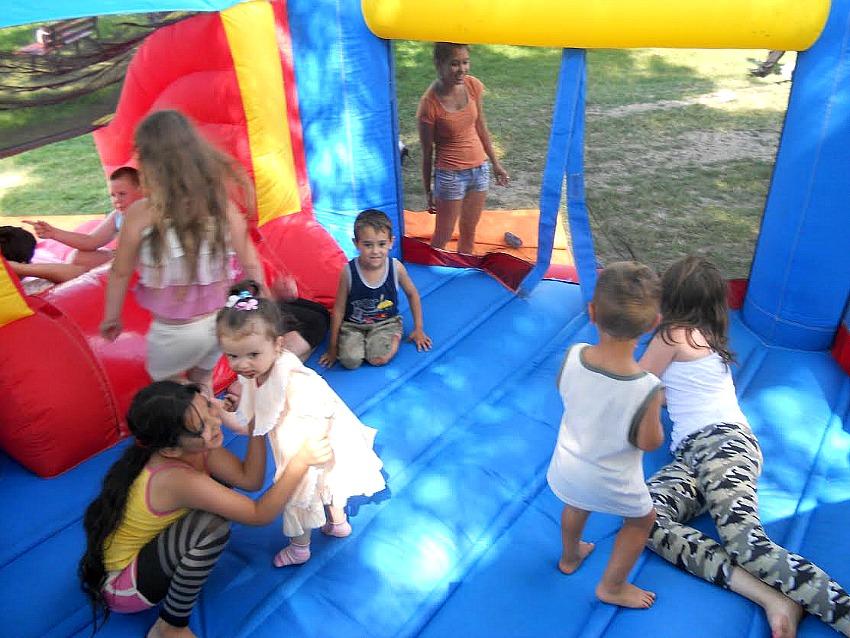
Más veszélyes szokásokra is fény derülhet a személyes találkozások alkalmával. A Máltai Szeretetszolgálat munkatársai egy család otthonában voltak látogatóban, amikor felsírt a csecsemő, az anyuka pedig rutinból fogott egy kétes állapotú vászonrongyot, megmártotta forró vízben és egy kis cukorban, és az újszülött szájába tette. „Így derült ki, hogy a mélyszegénységben élő, 500 fős szegregált roma telepen a többségében fiatal anyukák körében egyszer csak az lett a divat, hogy nem szoptatnak” – mutatott rá Hajdú Krisztina egy újabb problémára. „A segélyből kapott babatápszert nemcsak az újszülöttek eszik, hanem a kétéves és az ötéves gyerekek is, ha hónap vége van. A tápszerek ezért hamarabb fogytak el, ennek köszönhetően pedig a pár hetes vagy hónapos babák egy része a hónap utolsó tíz napjában nem jutott megfelelően táplálékhoz. Máris ott vagyunk a gyermekéhezés egyik vonulatában. Ezekre a tapasztalatokra építve elkezdtünk szervezni egy kampányt, hogy miért fontos a szoptatás.”
A Szeretetszolgálat a telepeken és a hátrányos helyzetű falvakban a korai gyerekévek védelmében Biztos Kezdet Házakat épített, ahol a kicsik megtanulhatnak tárgyakat használni, köszönni, WC-t használni, evőeszközzel enni. A szocializáció alapvető elemeit elsajátítva a nyomortelepre született gyerekek sem lógnak ki annyira az óvodában. Ráadásul, ha bármiféle mentális vagy testi probléma áll fenn, a korai években lehet leghatékonyabban segíteni.
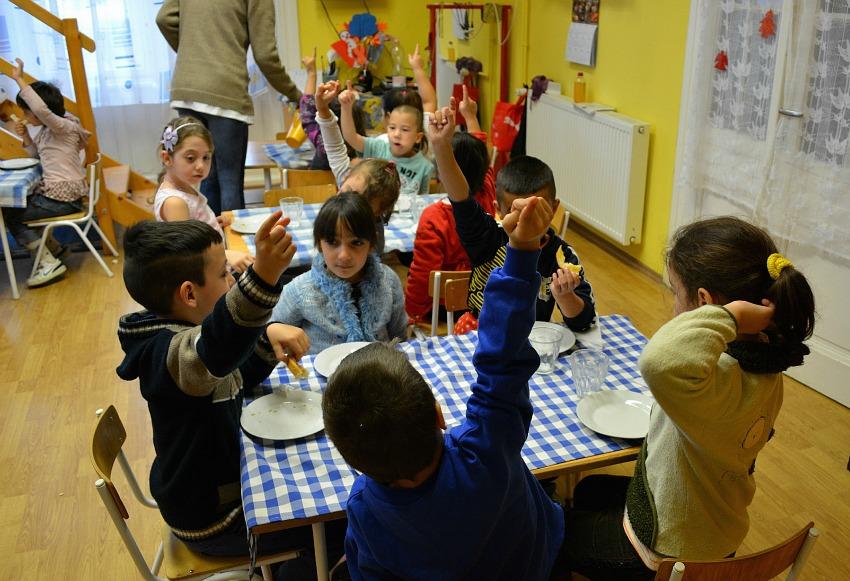
A rendszer teljessé tétele érdekében a kamaszokat megcélzó tanodák is létrejöttek. „Beszélgetünk a fiatalokkal, hangsúlyozzuk, hogy más lehetőségek is vannak számukra a korai gyerekvállaláson túl, tanulási lehetőségeket mutatunk nekik, kinyitjuk a világot. Amikor ebbe a korosztályba tartozók végül terhesek lesznek, akkor már jó eséllyel fognak visszanyúlni ehhez a bizalmi kapcsolathoz, ha problémájuk van. A kisgyerekük pedig bekerül a Biztos Kezdet Házba. Vagyis egy generáció alatt tudunk valamit fordítani, esélyt egyenlősíteni, lehetőségeket növelni” – mondta el a hosszú távú eredményekről a programkoordinátor.
Hajdú Krisztina fontosnak tartja, hogy kollégáival olyan központi emberekkel építsenek ki kapcsolatokat a telepeken, akiknek a gondolkodása és véleményalkotása példaadó a többiek számára. „Ha megtaláljuk azt a pár kulcsfigurát, akik kommunikálnak velünk, megértik, hogy miről beszélünk, onnantól kezdve el tud indulni egy folyamat. Igyekszünk a saját közösségükre építve megoldásokat keresni, és egy idő után a cél, hogy egyre inkább a háttérbe vonulhassunk.”
A közösségépítés sikerét bizonyítja, hogy idén egyre több helyen már a falvak lakói szervezték meg a Mikulás ünnepségeket. „Amikor már harmadszorra, negyedszerre vagyunk egy helyszínen, akkor sokszor az általuk ismert közösségből jönnek segítők. Kis dolgokat sokan felajánlanak: tartják a szemetest, amikor vizet osztunk, besegítenek a játékokban. Ha a fiatal felnőttek középiskola után visszamennek a faluba, akkor előfordul, hogy csatlakoznak hozzánk, kis közösségeket szerveznek, és együtt játszanak.”
A Máltai Szeretetszolgálat programkoordinátora ezeket a tevékenységeket az önkéntesség egy formájának tartja, Husz Ildikó azonban más oldalról közelíti meg a témát. „Kiből lehet jó önkéntes?” – tette fel a Coffee To Go beszélgetéssorozat alcíméhez is kapcsolódó kérdést a kutató. „A szegényebb közegekben általában kevés önkéntes van. Budapesten és más nagyvárosokban az emberek tanulás vagy munka mellett önkénteskednek, ami teljesen más helyzet, mint amikor valaki munkanélküli, nem tudja eltartani a családját, és az foglalja el az agykapacitása nagy részét, hogy hogyan teremtse meg a pénzt. Nekik nehéz azt mondani, hogy önkéntesen is feladatokat lássanak el.”

A gyermekszegénység nemcsak azt jelenti, hogy nincs ennivaló. A gyerekek rettentően ingerszegény környezetben élnek, ami akár a mozgásfejlődésben is akadályozhatja őket. „Nem tudják letenni a kicsiket a jéghideg, sáros, döngölt földre: innentől kezdve a négykézlábazás, a kúszás-mászás fázisa kimarad. Ezek a hiányzó szakaszok nagyon nehezen pótolhatók, és gyakran tanulási nehézségekhez, iskolai lemaradáshoz is vezethetnek a későbbiekben” – sorolta a később mutatkozó hiányosságokat Hajdú Krisztina.
„A gyermekéhezés egy olyan probléma, ami nem hever az utcán. Aki nem járt nyomortelepen, nem látott még éhező gyereket, nem szembesül ezzel” – tette hozzá a Nemzeti Minimum ötletgazdája, akit Terézapunak is szoktak hívni. „Több mint fél éven át látogattunk el hátrányos helyzetű településekre. Én akkor sírtam el magam először, amikor megsimogattam egy kisgyereket, és éreztem a kiálló bordáját. Ez az emlék nem engedi el az embert.”
Szakszon Réka
További fotók ide kattintva láthatók, a teljes beszélgetés pedig itt hallgatható vissza:
[:en]Researchers, social work experts, volunteers, members of civil society and politicians discuss the eradication of child hunger and improvements in the lives of disadvantaged children in Hungary. Is solving one of the most pressing problems of our time really a task for the whole of society?
In December our guests, invited for the program series Coffee To Go – The New Way of Volunteering, shared their opinions on the topic of child poverty.

If we think about hungry children, for many of us, African children first come to mind, who stand with thin arms and legs and stomachs bloated because of malnutrition before the cameras. This is not what child hunger looks like in Hungary as it happens while there are well developed social policies in place” said Ildikó Husz, senior research fellow of the MTA TK Gyerekesély (Opportunities for Children Team at the Centre for Social Sciences of the Hungarian Academy of Sciences).
We see diverging numbers in the media: the number of deprived children is estimated by some at one hundred thousand, and at five hundred thousand by others. But why are there such enormous differences between the figures read in varying articles? Ildikó Husz and her fellow researchers have set as their goal to estimate by methodologically correct means how many children suffer from hunger in today’s Hungary. In 2014 she published jointly with Csilla Marozsán the study “Szociális nyári gyermekétkeztetés – egy rendelet tanulságai” (Welfare Summer Meals for Children – Lessons from a Decree), which later became a reference for civil society initiatives and social programs as well.
The study showed that not having enough money for food occurred in 12% of families with children. The number of children who regularly do not receive enough food to eat may be estimated at between 36 and 54 thousand. In addition, we should mention over 200 000 hungry children in periods of crisis: they are the ones who count as potentially hungry in certain periods of the year. 9% of children do not receive fresh fruits and vegetables and every tenth child does not eat meat.
“When families receive their allowances, they do not go hungry for two weeks, but in the remaining one or two weeks they do not have enough money left for food”, Ildikó Husz explained the processes. “During the 180 days of school, children are provided food, which is why we cannot speak of daily hunger. But on weekends, in the third or fourth week after allowances were received and during the summer, winter and spring breaks many systematically do not receive food to eat.”

The researcher quoted Miklós Vecsei, Vice President of the Hungarian Charity Service of the Order of Malta, according to whom a single hungry child is too many in a country as developed as Hungary, where a considerable social policy system is in place.
“We also took this as our starting point. In the ordinary meaning of the word, it wasn’t so much volunteering, but rather a citizen’s pride or guilty conscience which motivated our initiative” continued Péter Horgas, stage and costume designer, the creator of the Nemzeti Minimum (National Minimum) program aimed at eradicating child hunger in Hungary.

“When we got started as a civil society initiative in January 2015, we asked that an amount that is necessary to prevent child hunger be guaranteed in the budget at all times” began Péter Horgas from the start. “We wished to understand what the underlying causes were: we invited specialists and we talked to many people.”
A proposal for a decision by Parliament requesting a statutory framework to eradicate child poverty in Hungary was drafted with a circle of specialists assisting the initial team. The proposal was accepted at its first reading, but the Committee on Social Welfare of the Parliament rejected it on November 2 in the end. According to Ildikó Husz, however, the National Minimum program considerably contributed to politics not being able to avoid the subject of child hunger anymore. It is largely thanks to them that welfare meals were extended to school breaks. On September 26 a large-scale Minimum Concert was held at the Sport Arena, where close to three hundred artists performed and music played for twelve hours.
“We do not wish to get into political wrangling, because it would distract our attention from the subject” said Péter Horgas. “This problem cannot be resolved by any single government alone because of to the nature of the phenomenon. Drafting laws and providing three times as much funding are in vain, this is a task that has to be resolved jointly by society.”
And the Hungarian Charity Service of the Order of Malta is also doing its share of what needs to be done. Within the framework of the Gyerekesély (Opportunities for Children) program they are present as consortium partners in eight disadvantaged districts. They make their way to villages with minivans packed with toys, that is to say, with mobile playgrounds. “We stop at meadows, by streams and school yards, we get the toys out and start playing with the children. And the children are never alone, the parents, older siblings and teachers are also there. Playing is at the same time a means of communication to get in touch with local people” related Krisztina Hajdú, the coordinator of the Opportunities for Children Team at the Hungarian Charity Service of the Order of Malta, about her work.
A big favorite among the toys is the bouncing castle, which can be installed quickly. There was a time that someone’s blood sugar level fell after five or six cycles and almost fainted. The other mothers said that the little ones usually received their first pálinka (a traditional Hungarian fruit brandy) at such times. The night and the cold are approaching and they start to numb the children around five o’clock so that they do not ask to eat, get cold or cry at night. “The children getting close to fainting were thus having withdrawal symptoms. These things would never come to light, if we just had them fill out questionnaires and we were not present” said Krisztina Hajdú about her experiences in the field.
Other dangerous habits may also come to light at personal meetings. The workers of the Hungarian Charity Service of the Order of Malta were visiting the home of a family, when a baby started crying and the mother took a dubious piece of cloth, dipped it into hot water and a little bit of sugar and stuck it in the newborn’s mouth out of habit. “This is how we found out that at a segregated Roma colony of 500 people, living in extreme poverty, it all of a sudden became trendy among mostly young mothers not to breastfeed their children” Krisztina Hajdú pointed out another problem. “The infant nutrition they can buy from aid were not only fed to newborns, but two year olds and five year olds as well, if it was the end of the month. As a result the formulae ran out sooner and some of the babies which were a couple of weeks or months old did not receive adequate nourishment during the last ten days of the month. We have just arrived at one of the trends in child hunger. Building on this experience we started organizing a campaign about why it is important to breastfeed children.”
The Charity Service built Biztos Kezdet Házak (Safe Start Houses) at colonies and in villages to protect the first years of children living in disadvantaged villages, where the little ones can learn to use objects, say hello, use the toilet and eat with knife, fork and spoon. By learning the basic elements of socialization, even children born to ghettos won’t stand out so much at nursery school. What is more, if there are any mental or physical problems, these may be addressed the most efficiently in the early years.

To make the system complete, schools aimed at teens have also been created. “We talk to young people, we emphasize that there are other possibilities for them than to have children early, we show them learning opportunities and open the world to them. When young people in this age group get pregnant eventually, they will likely get back to this relationship based on trust, if they have a problem. And their child will find the way to the Safe Start House. That is, we can turn something around in a single generation, to level the playing field, widen opportunities” said the program coordinator about long term results.
Krisztina Hajdú considers it important to build a relationship between her colleagues and central figures at colonies whose thinking and opinions serve as a model for the others. “If we can find the few key characters who will communicate with us and understand what we’re talking about, we can start a process from there on. We strive to find solutions building on their own communities and after a while the goal is to be able to withdraw as much as possible.”
The success of building communities is proven by the fact that this year St Nicolas Day festivities were organized by the inhabitants themselves in more and more villages. “When we arrive at a location for the third or fourth time, helpers often come from these communities that they know. Many people offer small things: they hold the garbage bags when we distribute water, they help with the games. If young adults return to the village after high school, they sometimes join us and organize small communities and play together.”
The program coordinator of the Charity Service of the Order of Malta considers these activities to be a form of volunteering, however, Ildikó Husz has a different approach to the topic. “Who can become a good volunteer?” the researcher asked this question, which is also related to the subtitle of the Coffee To Go discussion series. “In poorer milieus there are generally fewer volunteers. In Budapest and other large cities, people volunteer in addition to school or work, which is a completely different situation than if someone is without any jobs, cannot support his family and a large portion of his mental capacity is employed by thoughts about how to make the [necessary] money. It is difficult to tell them to carry out tasks as volunteers as well.

Child poverty does not only mean that there is not enough food. Poverty stricken children are living in an environment lacking stimuli to an extreme degree, which may even hinder them in the development of movement. “Their mothers cannot put the little ones down on ice-cold, muddy, stamped earth inside the houses: from this point, the stage of crawling on four legs is left out. These missing stages are very difficult to make up for and often lead to difficulties in learning and falling behind at school later on” listed the shortcomings that surface later on Krisztina Hajdu.
“Child hunger is a problem that is not lying around in the streets. Those who have not visited a slum and have not seen hungry children are not confronted by this” added the creator of the National Minimum, who is also called father Theresa. “We visited disadvantaged villages for over six months. I first cried when I stroked a small child and felt his ribs. This memory won’t let go of me.”
Réka Szakszon
Translated by: Judit Varga
[:]